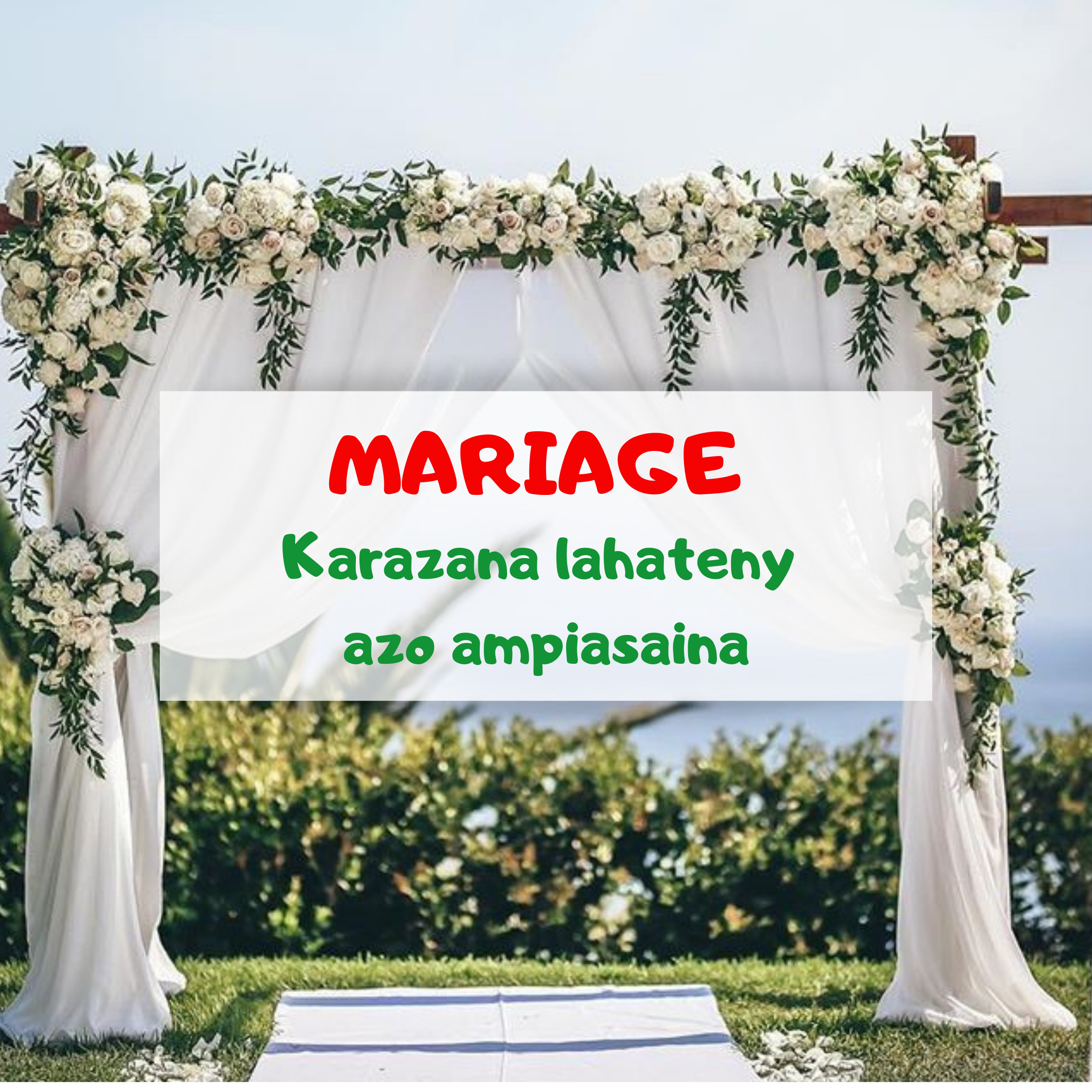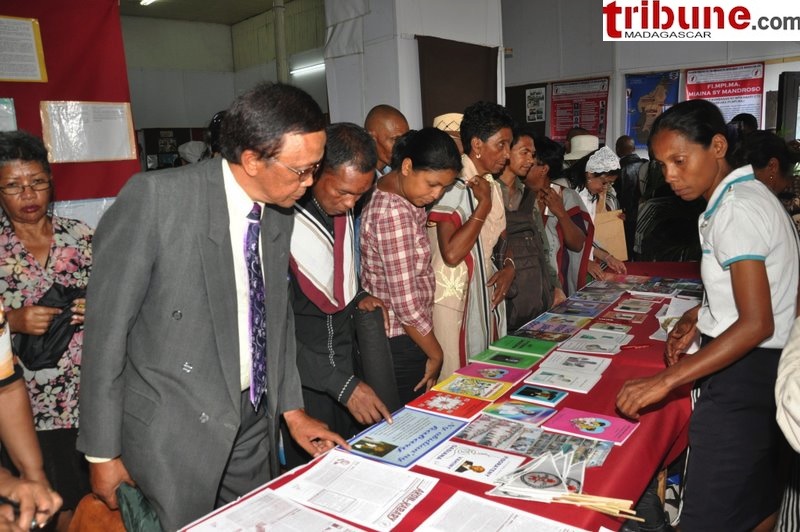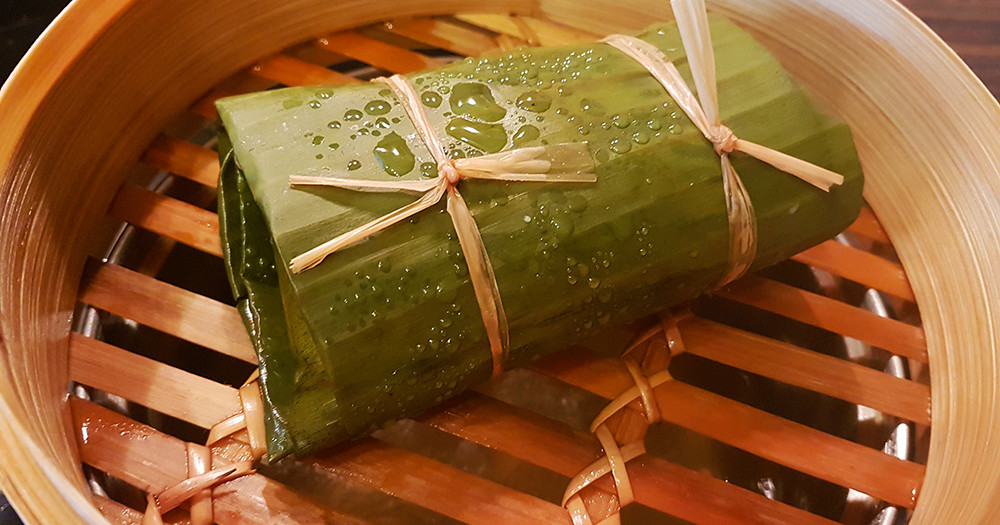Kabary Malagasy
In Madagascar: Daily life and social customs after the delivery of a kabary, a traditional “special occasion” speech. The kabary is also utilized at other occasions ranging from weddings to the opening of businesses. Speakers who are able to deliver a good speech, filled with appropriate traditional proverbs, are well paid. KABARY MALAGASY Kabary domboina ve raha ny anay, fa kabary tsy efan-kalady raha anareo. Eny tompoko, mafy tokoa izao fahoriana mihatra aminay izao ka mila tsy ho zaka fa olombelona moa, nefa izao fanontronanareo manao tongotra miara-mamindra sy tanana miara-mandray ary fo miara mitempo aminay izao, dia manamaivana ny fahoriana tokoa. Ka aza atao hoe inona iny na tsy hay aza, fa ny teny sy fiteny no iray amin'ny maha firenena ny firenena; ary ny kabary no iray amin'izay maha malagasy ny malagasy. Ny malagasy sy ny fahaiza-mikabary aza dia mbola azo antsoina hoe voahangy mitohom-bolamena, lopotra migalom-bolafotsy, solohoto sy firaka, harahara sy vy, tatamo sy voahirana ary. Apr 30, 2020 Rafitry ny kabary. See more of Kabary Malagasy on Facebook. Kabary tsy iangarana tsy vita. Ny Boky aza no toa manakaiky azy kokoa, fa natao endrika tranonkala izy mba ho mora vakiana sy mora hianarana; satria efa maro ny olona mampiasa aterineto amin’izao vanin’andro iainantsika izao. Malagady Kabary Malagasy Literary Arts. Fomba amam-panao Malagasy, antananarivo. 8,306 likes 22 talking about this. Ity pejy ity dia natao hampafantarana sy hifampizarana ny fomba amam-panao Malagasy. Malagasy aho, Malagasy ianao.
- Land
- People
- Economy
- Government and society
- Cultural life
- History
- Early history
- The kingdom of Madagascar
- The French period
- The Third Republic
The countryside, home to the majority of Malagasy, remains highly traditional, both in its lifestyle and in its political framework, with most decisions still being made by a council of male elders. Young people who resent this domination and see little economic future in their home villages are one of the main sources of the rural-to-urban migration that has fed the growth of Madagascar’s cities.
For rural residents, traditional ceremonies and traveling orators and musicians are a significant source of entertainment. In urban areas, forms of entertainment vary. Some Malagasy join video clubs, which rent and project videos. Action films are very popular, particularly since films are rarely dubbed or subtitled in Malagasy; poorer inhabitants of the cities, however, have reduced access to this type of entertainment.

Typical attire in Madagascar varies according to location and socioeconomic status. Malagasy who live in the countryside or in the poorer or older parts of the cities are more likely to wear traditional attire; for men, this consists of a large shirt and shorts or long pants, while women, particularly those living in the plateau, may wear dresses with gathered skirts. In the coastal regions, women often wear a wrapped skirt with a top; a rectangular shawl, called a lamba, is also worn, especially on ceremonial occasions. The middle classes frequently wear Western dress, and blue jeans are ubiquitous among the youth of the cities. There too, however, women will often wear an abbreviated form of the lamba, even with Western dress.
Most Malagasy, regardless of their degree of “modernity,” continue to observe traditional customs, particularly those connected with the family tomb and ceremonies showing respect for the family’s ancestors. The most common of these, aside from burial, is the famadihana, in which the bones of the ancestors are removed from the family tomb, wrapped in new lamba especially woven for that purpose, and placed again in the tomb after the delivery of a kabary, a traditional “special occasion” speech. The kabary is also utilized at other occasions ranging from weddings to the opening of businesses. Speakers who are able to deliver a good speech, filled with appropriate traditional proverbs, are well paid.
The government encourages the blending of old and new cultural expressions, and a number of seasonal festivals have been promoted, including the Festival of Rice and the Festival of the Trees. Towns, churches, schools, and private groups hold concerts or dances, and in the cities there are cultural associations based on the members’ home districts. Holidays celebrated in Madagascar include those observed by the wider Christian community, such as Easter and Christmas, as well as Independence Day, celebrated on June 26, and the Anniversary of the Republic, observed on December 30.
The arts
The conquest of the plateau peoples by the French and their subsequent assimilation of Western values have deprived them of most of their traditional institutions. In music, however, Western dance and musical instruments have been adapted to Malagasy rhythms. The tube zither, the conch, and the cone drum are of Indonesian origin, while other types of drums and animal horns suggest African influence. Folk music has been retained, but much of the singing consists of Western church hymns and chants adapted to the distinctive Malagasy musical style. Several musicians and ensembles of Malagasy origin, including Tarika, have enjoyed a rise to international popularity.
The Mahafaly have a remarkable wood-carving industry, and their tombs of coloured stones and carved wooden posts are among the most beautiful on the island. The woodworking skills of the Zafimaniry, exemplified by their elaborate carved designs, are also renowned; their knowledge of woodcraft is included by UNESCO among its designations of Intangible Cultural Heritage, intended to safeguard nonmaterial cultural properties. The Betsileo also have a thriving wood-carving industry, making inlaid furniture of valuable hardwoods. In addition they produce ornamental cloths of very finely woven raffia and have become specialists in the production of coloured straw hats. Betsileo and Merina women in particular are expert in French-style embroidery, sewing, and dressmaking.
The Malagasy language is rich in proverbs, and there is now an extensive written literature including poetry, legend, history, works treating contemporary themes, and scholarly works. Literary production is aided by an excellent printing industry, for which the Merina have shown a flair since learning it from the London Missionary Society in the 1820s. The peoples of the southeast still preserve their sorabe manuscripts—discourses written in Arabic script on geomancy, astrology, history, and traditional lore—with great reverence; few can be more than 200 years old, although some may be copies of much earlier manuscripts.
Cultural institutions
The main libraries and museums, located in Antananarivo, include the National Library, the Municipal Library, and the National Archive. There are also the library of the Malagasy Academy, the university library, and the university museum. There are museum collections of Malagasy culture and archaeology. Natural science collections include a zoo with animals unique to Madagascar.
A number of Madagascar’s sites of significant cultural and natural value have been designated UNESCO World Heritage sites. Among these are the Royal Hill of Ambohimanga, located near Antananarivo, which contains a royal city, burial ground, and a number of sacred sites; the Rainforests of the Atsinanana, made up of six national parks located in the eastern portion of the island; and the Tsingy de Bemaraha Strict Nature Reserve, located in the west of the island, which, with its forests, swamps, lakes, and peaks, serves as an important habitat for some of Madagascar’s rare and endangered wildlife.
Hainteny (pronounced [hajnˈtenʲ], Malagasy for 'knowledge of words') is a traditional form of Malagasyoral literature and poetry, involving heavy use of metaphor. It is associated primarily with the Merina people of Madagascar.[1] In its use of metaphor and allusion it resembles another type of poetry, the Malaypantun, and Fox[2] suggests 'it seems likely the Merina brought with them a Malayo-Polynesian poetic tradition' to Madagascar. The Ibonia, an epic poem related for centuries in different versions across Madagascar, reflects the value placed on the linguistic skills celebrated in the hainteny tradition, and offers insight into the diverse mythologies and beliefs of traditional Malagasy communities.[3]
Collections of hainteny were first gathered in print form on the orders of Queen Ranavalona I in the 19th century. The French writer Jean Paulhan, who stayed in Madagascar from 1908 to 1910, made an intensive study of the hainteny and published a book of translations in 1913.[4]
Hainteny often incorporates ohabolana (proverbs) and kabary (public discourse). Both of these two oral traditions remain integral parts of Malagasy daily life, where they are pronounced at such events as weddings, funerals, births and famadihana and constitute an essential component of hiragasy performances. They may also include angano (folktales and fables), tantara (historical narratives) or ankamantatra (riddles).[5] These diverse Malagasy oral traditions were advanced in the 20th century by such artists as Jean Joseph Rabearivelo, who is considered Africa's first modern poet,[6] and Elie Rajaonarison, an exemplar of the new wave of Malagasy poetry.[7]
Ohabolana[edit]

'Proverb' offers a weak approximation of the meaning of ohabolana, which constitute no less than concise expressions of the Malagasy philosophical worldview. While the exact number of existing ohabolana is unknown, the largest published collection includes over 6,500 of them relating to all aspects of life and particularly the human condition. Fox has described ohabolana as constituting 'a universal philosophy of life that transcends its Malagasy context and merits admiration as one of man's noble attempts to construct a valid moral and philosophical framework for his existence.'[8] Ohabolana are not the property of a particular class but are rather at the disposition of anyone who finds a salient application of a particular expression to a given situation. Their form persists unchanged from ancient times even when grammar and syntax of contemporary speech have since evolved because, as Fox notes, altering an ohabolana would constitute disregard for the venerated ancestors who are their originators. Ohabolana are characteristically brief, metaphorical, symmetrical in pattern and syntax.
Examples:[9]
Manasa lamba be tseroka; na madio aza, mangarahara.—Washing a very dirty dress: even though it gets clean, it becomes full of holes.
Ny tsiny toy ny rivotra: mikasika ny tena, fa tsy hita tarehy.—Blame is like the wind: felt but not seen.
Ny voky tsy mahaleo ny tsaroana.—A good belly-full doesn't equal a kind remembrance.
Aza asesiky ny fitia tanteraka, ka tsy mahalala ny ranonorana ho avy.—Don't be so much in love that you can't tell when the rain is coming.


Kabary[edit]
The tradition of kabary in Madagascar, which predates Merina King Andrianampoinimerina (1787–1810), nonetheless owes much of its modern form, usage and meaning to standards set at his court. Kabary is a highly stylized form of speech that has formed an important part of Malagasy culture for centuries. One who speaks kabary is known as mpikabary. Skill in this form of ceremonial public speaking—in which ohabolana proverbs play a privileged role—is highly esteemed and one who shows himself to be a tompon'ny kabary (master of kabary) enjoys a higher level of respect and even authority. According to the classic collection of Malagasy folklore 'Tantara ny Andriana eto Madagasikara' the right to rule could even be determined by one's eloquence and skills in kabary, to the point where tompon'ny kabary and sovereign become interchangeable concepts:
Kabary Malagasy Fiterahana
We understand therein the function of the kabary:
there is a master of the words,
there is somebody who answers.
It is the master of the words who rules the kingdom;
As for the one who answers to the kabary,
it is the public acknowledgment of his submission.[10]

Kabary forms an integral part of numerous important social ceremonies, including marriage, famadihana, circumcision and burial. By choosing to use the kabary speech style, a speaker can render any situation more formal and ceremonial, such as can happen when expressing condolences, offering thanks, formally addressing a gathering or giving a political address. To this day, skill in kabary can play a deciding role in the success of a Malagasy politician's career.
Kabary may be delivered by two or more mpikabary at the same occasion, and each one generally was nominated by and represents a portion of the audience present, as during hiragasy performances. When this happens, kabary speech can take on somewhat competitive overtones as the speakers attempt to demonstrate their superior skills. The mpikabary typically addresses himself to the audience of his opponent, and while direct confrontation is generally frowned upon in polite society in the Highlands of Madagascar, if an opponent mpikabary makes an error in the form of the kabary or misstates an ohabolana, this is commonly pointed out in an indirect or delicate manner as evidence of greater mastery. The use of indirect language such as proverbs is viewed as the more challenging, adult manner of speaking and demonstrates skill, while direct criticism, bluntness, hateful speech or anything that causes loss of face to the audience or a rival speaker is censured and despised as lacking in skill. Kabary is generally the domain of men and not women, because women are believed and expected to speak in a more straightforward way—including the expression of anger that can cause loss of face to the speaker—while men are expected to preserve face by taking the time to choose their words carefully when speaking to others. Nonetheless, some women may exceptionally engage in kabary (for instance, all queens), although men represent the vast majority of mpikabary.[11]
Kabary Malagasy Pdf
References[edit]
- Auzias, Dominique; Jean-Paul, Labourdette (2008). Petit Futé: Madagascar 2008 (in French). Paris: Petit Futé. ISBN978-2-7469-1982-2.
Fianarana Kabary Malagasy
- ^Houlder, J.A. (1929). Ohabolana, or Malagasy Proverbs, Illustrating the Wit and Wisdom of the Hova of Madagascar. Antananarivo: Friends' Foreign Missionary Association.
- ^Fox, L. (trans.). (1990). Hainteny, the Traditional Poetry of Madagascar. Lewisburg, PA: Bucknell University Press.
- ^Unknown. 'Ibonia: the text in 17 sections'. University of Virginia. Archived from the original on July 10, 2011. Retrieved November 15, 2010.
- ^Paulhan, J. (1913). Les Hainteny merina. Paris: Geuthner.
- ^Peek, P. and Yankah, K. (2004). 'Malagasy Folklore and its Study.' In African Folklore: an Encyclopedia. New York: Routledge.
- ^Rabearivelo (2007), p. x
- ^Auzias & Labourdette (2007), p. 142
- ^Fox, L. (1990). Hainteny: the traditional poetry of Madagascar. London: Associated University Presses. (p. 37)
- ^Sibree, J. & Baron, R. (Eds.). (1893).The Antananarivo annual and Madagascar magazine. 5(17)—Part 1. Antananarivo: L.M.S. Press.
- ^Ottino, P. (1983). Ancient Malagasy Dynastic Succession: The Merina Example. History in Africa, 10, 247–292. ('Dia hita eo ny fomban'ny kabary: misy tompon'ny teny,dia misy mamaly.Izay tompon'ny teny no mitondra ny fanjakana;ary ny olona kosa mamaly kabary, fanehoana fa mpanoa.' p. 261)
- ^Keenan, E. (1998). 'Norm-makers, norm-breakers: Uses of speech by men and women in a Malagasy community.' In The Matrix of Language: Contemporary linguistic anthropology. Boulder, CO: Westview Press. pp. 99–115